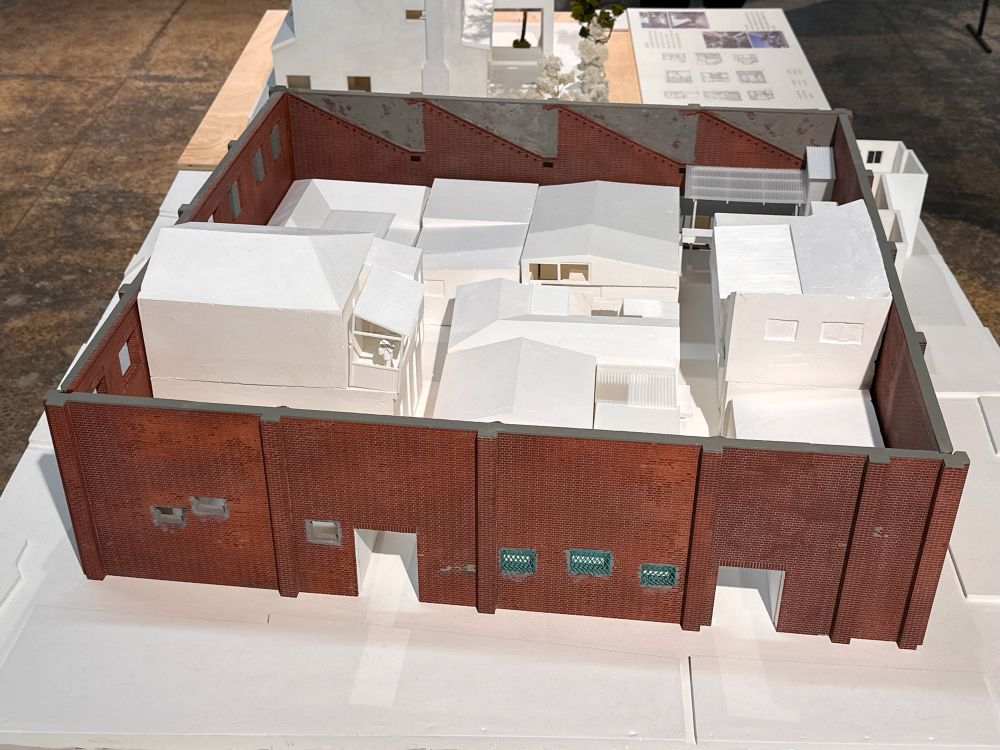Jack Greenberg (그린버그 잭)
@jackwgreenberg.bsky.social
Independent Researcher and Freelance Writer. Former Global 🇰🇷 Scholar. 고려대학교 and McGill Alumnus. Currently working on contested histories, memory sites, and Korea’s truth commission.
📧 [email protected]
‘Ggachi’ on Substack (ggachi.substack.com)
📧 [email protected]
‘Ggachi’ on Substack (ggachi.substack.com)
Rather he focuses on bringing in people who are open to learning through field expeditions and believes that one can quickly acquire the necessary knowledge about Hanok through modeling.
October 31, 2025 at 3:16 PM
Rather he focuses on bringing in people who are open to learning through field expeditions and believes that one can quickly acquire the necessary knowledge about Hanok through modeling.
It was removed due to lack of space, but Cho said that while Hanok is what they are especially known for, he does not let Hanok knowledge guide hiring decisions.
October 31, 2025 at 3:16 PM
It was removed due to lack of space, but Cho said that while Hanok is what they are especially known for, he does not let Hanok knowledge guide hiring decisions.
Link to the article: www.koreatimes.co.kr/amp/southkor...

Architectural firm's exhibition reveals Seoul’s vanishing neighborhoods - The Korea Times
As pockets of Seoul undergo rapid redevelopment — from Hannam-dong to the disappearing industrial alleys around Sewoon Sangga — the question of how...
www.koreatimes.co.kr
October 31, 2025 at 11:29 AM
Link to the article: www.koreatimes.co.kr/amp/southkor...
Within the remaining structure they built their houses. Cho and his team were fortunate to document this before it was demolished for redevelopment. They returned quickly with staff from the Seoul History Museum for further investigation, but by then, it had already disappeared.

October 31, 2025 at 11:29 AM
Within the remaining structure they built their houses. Cho and his team were fortunate to document this before it was demolished for redevelopment. They returned quickly with staff from the Seoul History Museum for further investigation, but by then, it had already disappeared.
One model I didn’t have space to cover in the article is the 1939 factory in Wangsimni. After liberation, it was used to produce jang (fermented paste), but toward the end of the Korean War, a fire destroyed the roof, leaving only the red brick walls. Refugees then moved in.


October 31, 2025 at 11:28 AM
One model I didn’t have space to cover in the article is the 1939 factory in Wangsimni. After liberation, it was used to produce jang (fermented paste), but toward the end of the Korean War, a fire destroyed the roof, leaving only the red brick walls. Refugees then moved in.
While a professional curator might have improved the narrative flow, the visit is still very worthwhile for the models alone, which stand as works of art in their own right. Cho also deserves praise for the 1,000+ Wednesday Field Trips he conducted.




October 31, 2025 at 11:27 AM
While a professional curator might have improved the narrative flow, the visit is still very worthwhile for the models alone, which stand as works of art in their own right. Cho also deserves praise for the 1,000+ Wednesday Field Trips he conducted.
The exhibition is being held in Gyeonji-dong at the former Koo Young-wook Pediatrics Clinic, a building I was glad to finally see inside.


October 31, 2025 at 11:26 AM
The exhibition is being held in Gyeonji-dong at the former Koo Young-wook Pediatrics Clinic, a building I was glad to finally see inside.
The temple reopened to the public in 1991 as Boramae Beopdang. Renovations took place from 2016 to 2022, but what is of particular interest is the original hall’s concrete curved roof, which mimics a traditional style and is painted in dancheong colors.


October 14, 2025 at 7:17 AM
The temple reopened to the public in 1991 as Boramae Beopdang. Renovations took place from 2016 to 2022, but what is of particular interest is the original hall’s concrete curved roof, which mimics a traditional style and is painted in dancheong colors.

